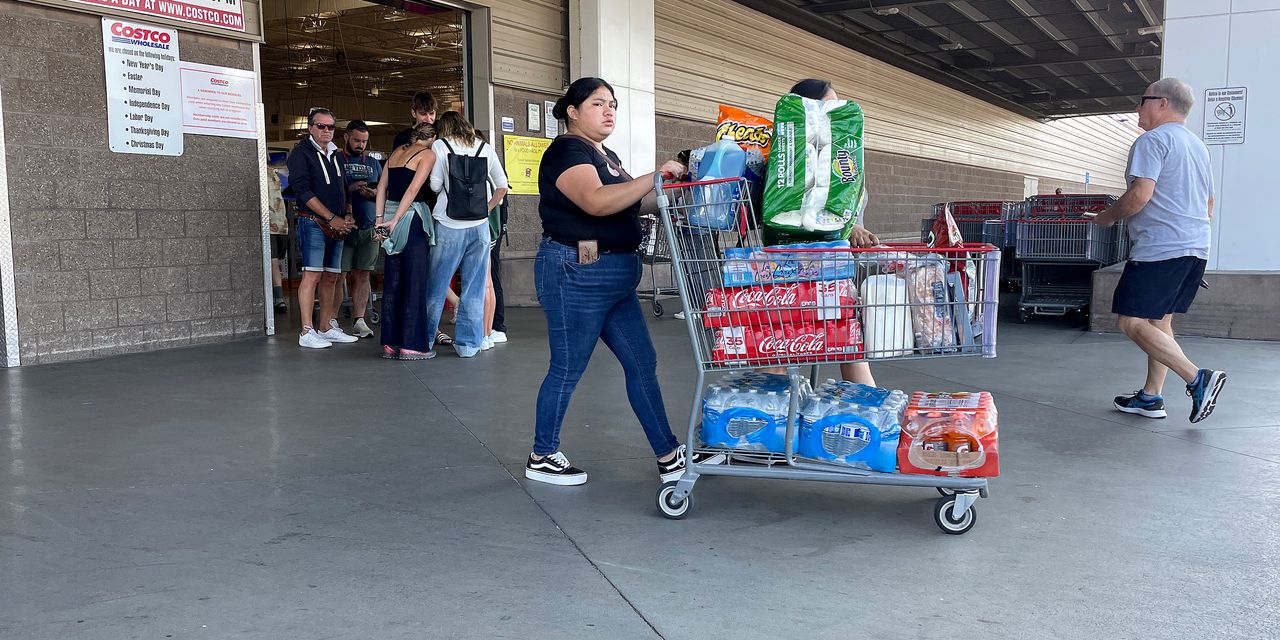A day ahead of the October inflation report, consumers think inflation rates will barely continue their slow ebb away from scorching levels.
Even with rates inching incrementally lower, people’s expectations for inflation were largely unchanged from September to October, according to the latest survey of consumer expectations from the Federal Reserve Bank of New York.
The median estimated inflation rate one year from now will be 3.6%, according to the survey released Monday. That’s a slight drop from the 3.7% year-ahead estimate in last month’s survey.
Still, consumers’ expected year-ahead inflation rates have been stuck around the mid-to-high-3% range since June.
The Labor Department will release October’s consumer-price index on Tuesday morning.
In September, year-over-year inflation rates were 3.7%, unchanged from August and coming in slightly higher than the forecast 3.6% annualized rate.
In October, year-over-year inflation rates could drop to 3.3%, according to economists polled by the Wall Street Journal.
Inflation expectations are inching lower, according to the New York Fed data. April 2021 was the last time consumers were expecting year-ahead inflation rates in the 3% range, the survey data show.
In a different gauge of consumer sentiment last week, consumers said they thought inflation rates would increase to 4.4% in the year ahead. The overall sentiment numbers from the University of Michigan polling hit a six-month low.
Read also: Citadel’s Ken Griffin sees high inflation lasting for decades
Inflation rates hit four-decade highs in 2022, but the aftereffects still sting. The question is, what spending decisions are people making now, especially as the holidays near?
One theory is that higher-income consumers are continuing to spend, while lower-income consumers are pulling back more and feeling the strain on their budget.
Major retail businesses will offer clues this week, with Walmart Inc.
WMT,
and Target Corp.
TGT,
both reporting earnings results.
Earlier this month, Target CEO Brian Cornell said people are “buying less stuff, even within food and beverage.”
Read the full article here





